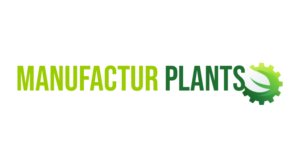Efficient thermal management is a cornerstone of predictive maintenance, a strategy that helps prevent industrial equipment failures and reduces downtime. By employing advanced techniques to monitor and control temperatures, businesses can enhance machinery performance, extend lifespan, and optimize overall industrial efficiency. Let’s explore how these techniques contribute to a well-maintained and high-performing industrial environment.
Thermal imaging, or thermography, plays a vital role in predictive thermal management. Using infrared cameras, this non-invasive method allows maintenance teams to detect temperature variations in machinery. By identifying hot spots and abnormal heat patterns, technicians can take corrective actions such as improving cooling systems or addressing electrical faults before they cause unplanned downtime, thus safeguarding equipment longevity and operational efficiency.
The heat resistance of materials used in industrial equipment is another important consideration. For example, borosilicate glass, which can withstand temperatures up to 932°F (500°C), is commonly used in high-heat applications. For even more demanding environments, advanced materials like PyroCeram® and NeoCeram® can handle temperatures up to 1470°F (800°C), offering superior thermal stability for critical industrial components.
Monitoring the temperature of electronic components is also crucial. Overheating can cause malfunctions or permanent damage, leading to reduced system performance. Regular temperature checks and maintenance help ensure that these components operate within their optimal range, improving overall reliability and reducing the risk of failures.
Integrating thermal management with other predictive maintenance technologies—such as vibration analysis and motor circuit monitoring—provides a comprehensive approach to equipment maintenance. By analyzing data from multiple sources, maintenance teams can predict failures more accurately, allowing them to prioritize repairs and optimize their maintenance schedules.
Proper training and expertise are essential for effective predictive thermal management. Maintenance personnel must be well-versed in using thermal imaging tools and interpreting the data accurately. Ongoing training ensures that staff stays current with advancements in thermal technology and best practices, improving the overall success of the maintenance program.
In summary, predictive thermal management is a powerful tool for improving industrial performance. By monitoring temperatures, understanding material properties, and integrating multiple diagnostic tools, companies can avoid costly repairs, reduce downtime, and extend equipment lifespans. Proper training and proactive maintenance are key to realizing the full benefits of this approach.
For further insights into thermal management techniques, please refer to the accompanying resource. Courtesy of Linseis, a provider of the finest dilatometer instrument.

